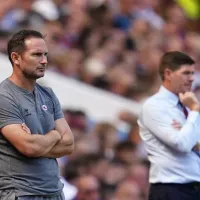When Leeds decided to part company with Javi Gracia and bring in Sam Allardyce it became the 15th managerial change of this Premier League season, a record for sackings of managers by owners. The previous high was in the 2017/18 season. But, why has the practice become so commonplace? Clubs constantly seek change to reverse their fortunes, and the managers fall as the scapegoats. In reality, the blame lies higher up in the food chain of the club hierarchy.
The trend for mid-season managerial change in the Premier League steadily rose since its inception in 1992. Therefore, in some regard, this new benchmark merely continues the pattern to its next step. What stands out this season, however, is that those 15 changes have come from just 11 clubs. Four clubs, including Leeds United, have made two changes during the one season.
It cries of mismanagement from the top, an admission of error and a desperate attempt at over-correction. Rather than managers, it is the duty of those in the posh seats to determine a club’s route. Those executives identify the personnel to accomplish preset goals. To get it wrong once is bad. But, to do so twice in the space of one year is, ironically, a sacking offense.
Big clubs get big decisions wrong
The highest-profile example of owners contributing to the record sackings of managers this season is Chelsea. Chelsea adopted the cavalier approach. It made scattergun signings and played with the eye-watering spend of new owner Todd Boehly. That all failed spectacularly, much to the amusement of fans of the league’s other 19 teams.
Accepted wisdom says Chelsea was perhaps wrong to part so hastily with Thomas Tuchel. Then, it was naïve to bring in Potter who, for all his obvious pros, was wholly untested. Worse off, this relatively unproven manager dealt with a squad of entirely new faces. Follow that up with the reappointment of Frank Lampard as the man to salvage the season. It is indisputably the result of bad planning from the top down.
At least Chelsea fans can take heart from the plight of a team across the capital. North London rival Tottenham has been suffering its own meltdown. It, too, is on its third manager of the season. This is the culmination of failing to consistently recover from letting go of Mauricio Pochettino in 2019. The fact that his departure was a self-inflicted wound by the club following a failure to financially back the Argentine only serves to highlight the club’s failings at the top level.
Botched attempts at replacing him provide little evidence that these decisions are made by the smartest men available. Spurs hired an out-of-sorts Mourinho, a fifth-choice Nuno and a hot-headed ‘winner’ in Antonio Conte. The Italian never gave the impression he wanted to be there in the first place.
Owners put managers to sword with record sackings
What the latest appointment at Leeds demonstrates is the lack of consideration for the playing style and long-term approach that owners can adopt. Going from Marcelo Bielsa to Sam Allardyce in a little over one year is a shift as stark as you can imagine. In between the two, Jesse Marsch made signings of his choice to suit his high-pressing playing style. Now, these players are bit-part players on large wages that cost big transfer fees. Swinging so violently from one approach to another suggests less of a plan and more of desperate late-night trolley dashes for whoever’s available.
The league’s bottom club, Southampton, is the fourth team on its third manager of the year. Formerly an example of how to run a smaller club in the top flight, their season has been a result of ill-planning, unbalanced experience levels within the squad a huge managerial gamble on the wildly untested Nathan Jones.
Interim managers
Among these unending appointments, a new job has emerged: the dedicated interim manager. This paid intern position is taken up by those considered able to get the job done. Yet, it does not disrupt things too much for a future, longer-term appointment to follow in the summer. Roy Hodgson at Crystal Palace, Dean Smith at Leicester, Ryan Mason at Spurs and the previously mentioned Lampard and Allardyce. At least two of these have taken over from a previous caretaker manager themselves in Lamard and Allardyce. Once again, this underlines a lack of forethought at the very top.
Managers and clubs alike have little to gain from the role. Fail to perform and the club boots you out the door. Succeed and suddenly the owners have a headache over who to hire in the summer.
What it speaks to is the desperate fear of relegation and the anxious panic it can elicit among owners. It’s unsurprising too with the financial implications involved. Deals are tied up with guarantees of Premier League income or revenue from European competitions and to lose one of these can result in a speedy fall from grace. Owners know this all too well, they are first and foremost businessmen after all and, while the Premier League promises high rewards and reputation boosts, the risks are just as mighty.
Instances of success
Maybe it’s best to look at the successful models, the positive examples set by Brighton and Brentford. Both adapted to life in the league and excelled within it thanks to shrewd and knowledgeable ownership. Or at Manchester City where the club spent five years building a project tailor-made for Pep Guardiola before he even joined and are now seeing the benefits of their actions.
Sadly though, less fruitful ownership models regularly outnumber these examples of success. The lure of the Premier League, its wealth and global appeal likely prove too attractive to those with bigger wallets than football know-how.
The Premier League has the best players and managers in the world. It needs the best owners, too.
PHOTO: IMAGO / Colorsport














